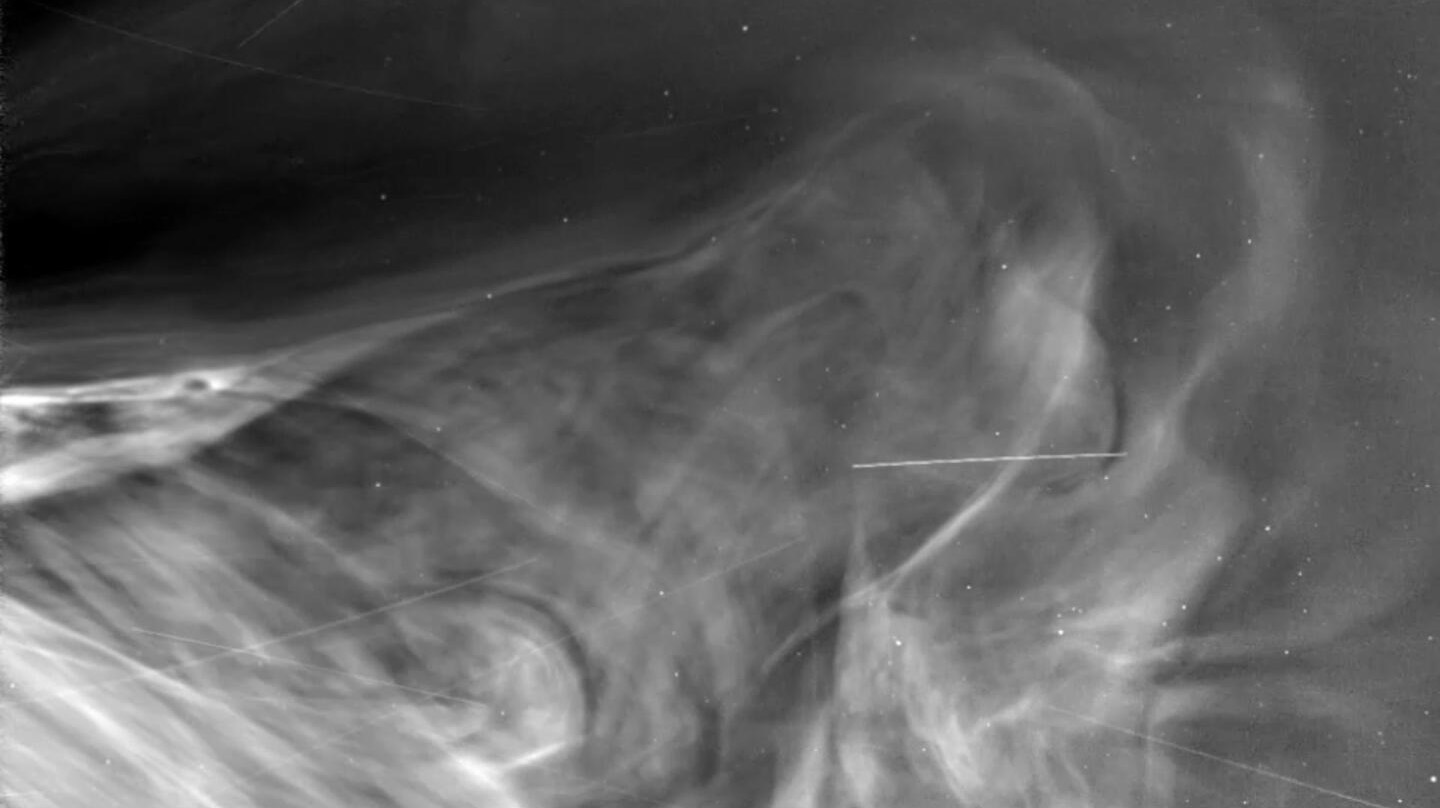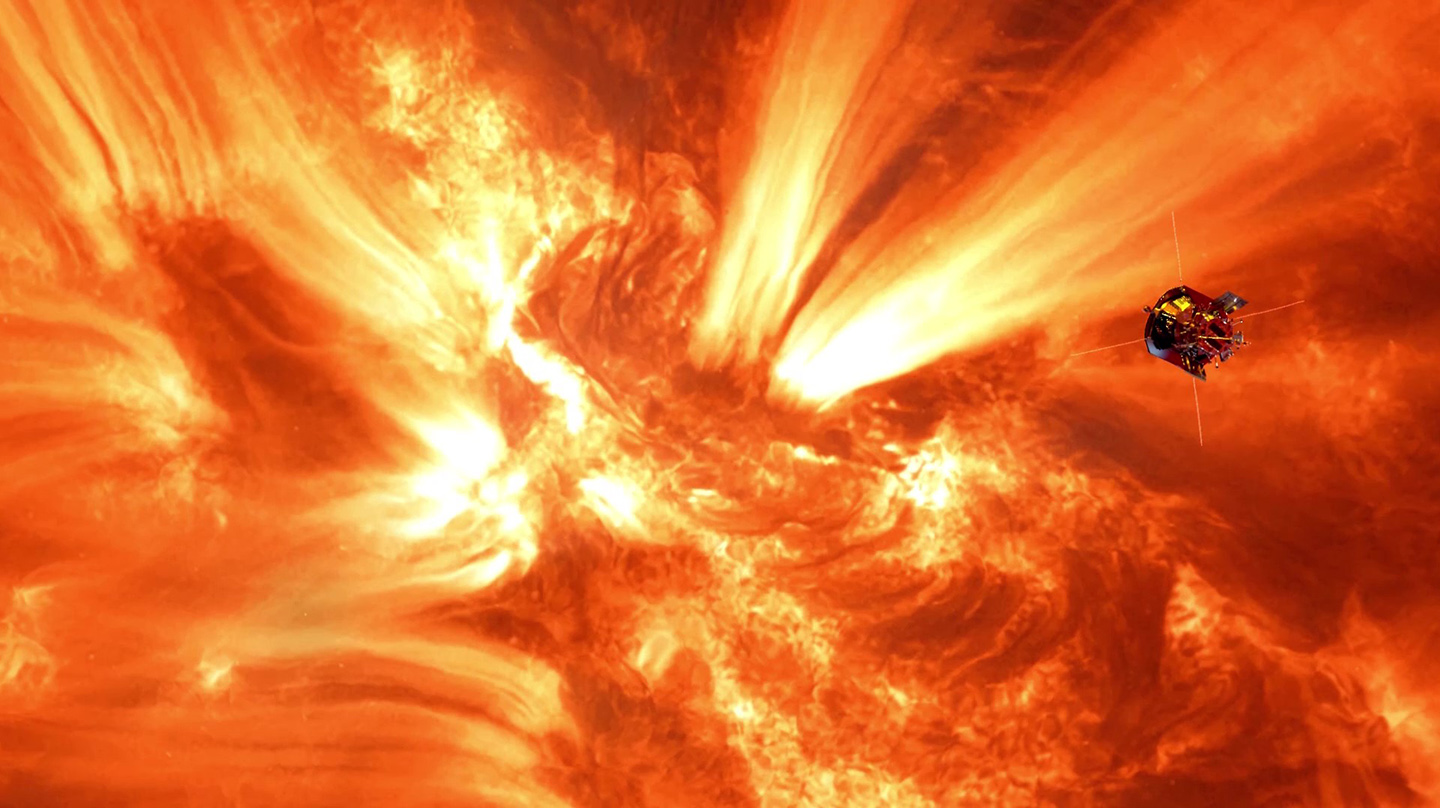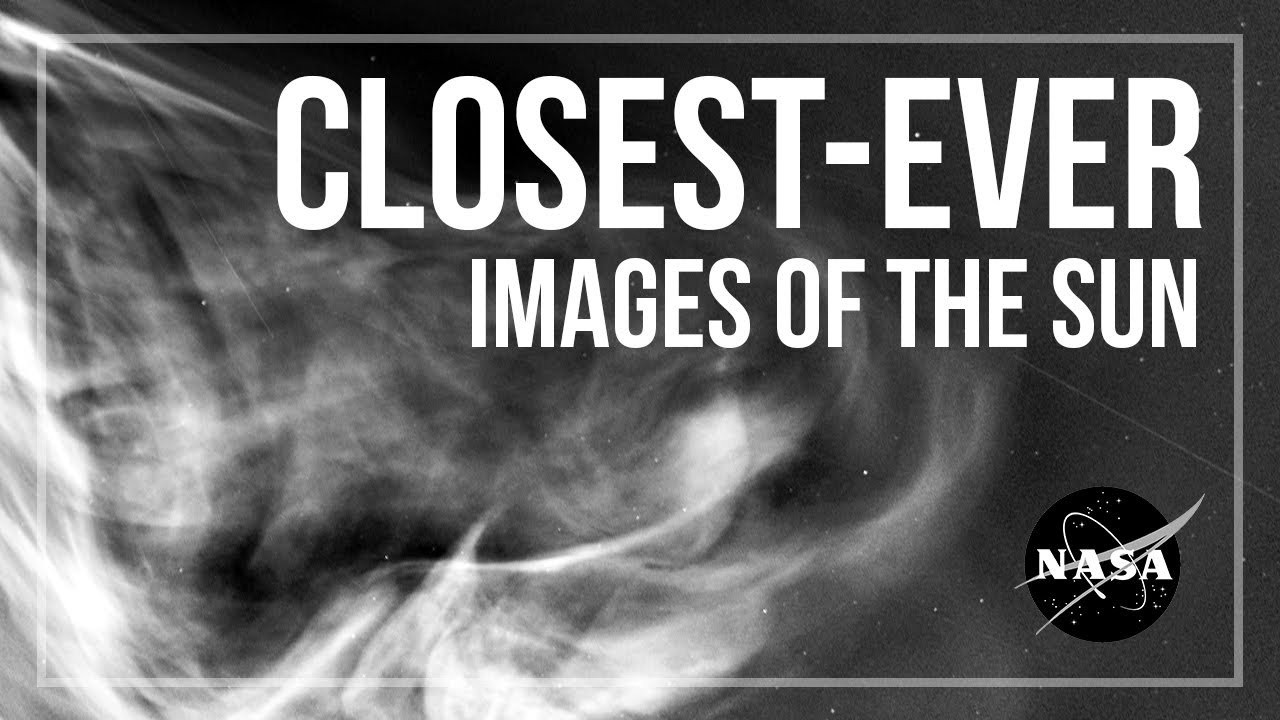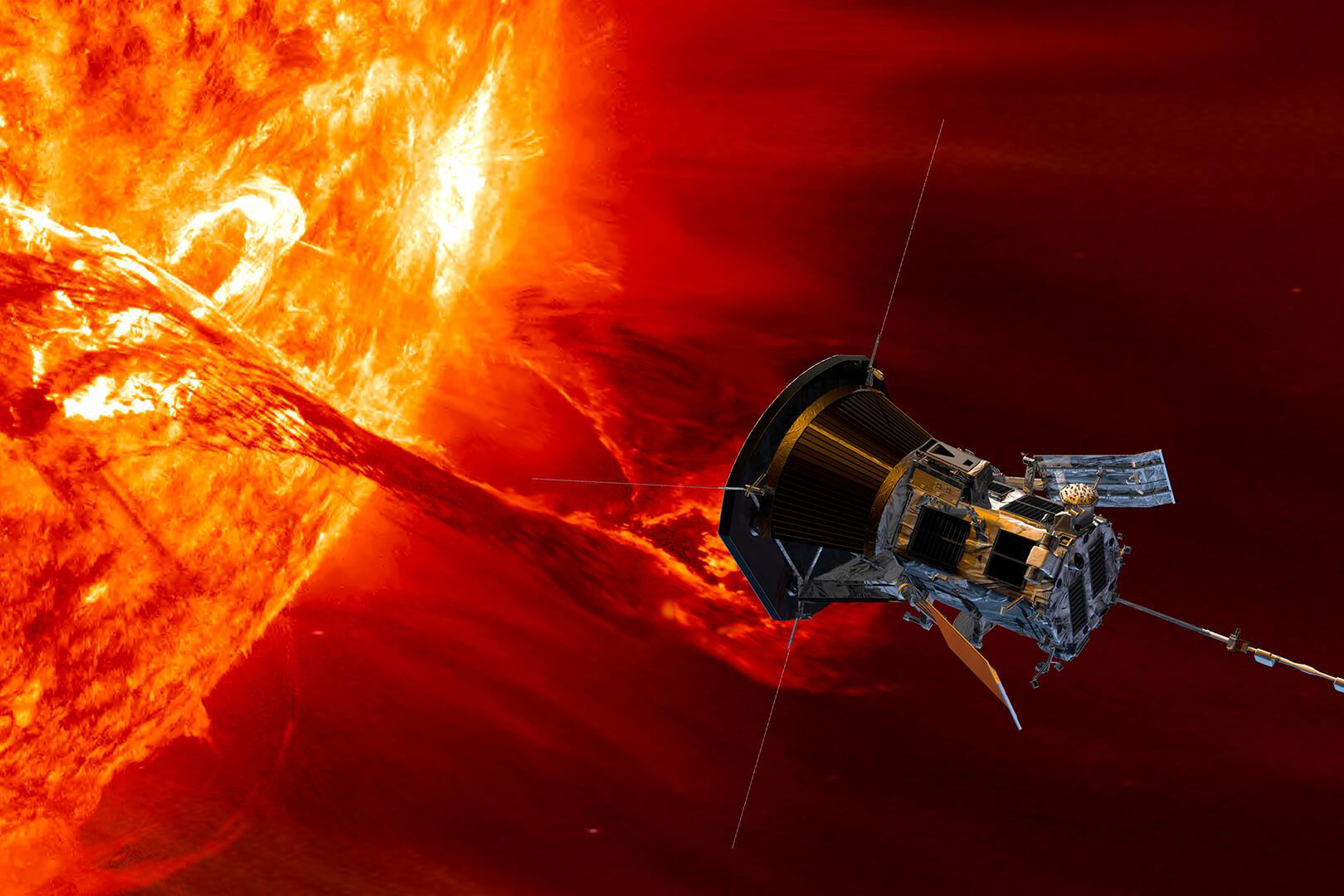Zooming in on Solar Wind’s Origins
The solar wind was first theorized by preeminent heliophysicist Eugene Parker in 1958. His theories about the solar wind, which were met with criticism at the time, revolutionized how we see our solar system. Prior to Parker Solar Probe’s launch in 2018, NASA and its international partners led missions like Mariner 2, Helios, Ulysses, Wind and ACE that helped scientists understand the origins of the solar wind — but from a distance. Parker Solar Probe, named in honor of the late scientist, is filling in the gaps of our understanding much closer to the Sun.
At Earth, the solar wind is mostly a consistent breeze, but Parker Solar Probe found it’s anything but at the Sun. When the spacecraft reached within 14.7 million miles (around 23.7 million kilometers) from the Sun, it encountered zig-zagging magnetic fields — a feature known as switchbacks. Using Parker Solar Probe’s data, scientists discovered that these switchbacks, which came in clumps, were more common than expected.
When Parker Solar Probe first crossed into the corona about 8 million miles (12.9 million kilometers) from the Sun’s surface in 2021, it noticed the boundary of the corona was uneven and more complex than previously thought.
As it got even closer, Parker Solar Probe helped scientists pinpoint the origin of switchbacks at patches on the visible surface of the Sun where magnetic funnels form. In 2024 scientists announced that the fast solar wind — one of two main classes of the solar wind — is in part powered by these switchbacks, adding to a 50-year-old mystery.
However, it would take a closer view to understand the slow solar wind, which travels at just 220 miles (354 kilometers) per second, half the speed of the fast solar wind.
Nour Rawafi, project scientist for Parker Solar Probe at APL, said predicting the solar wind is a major challenge, especially given the diversity of these streams. “But with Parker Solar Probe,” he added, “we’re closer than ever to uncovering the origin and evolution of space weather.”
Understanding Slow Solar Wind
The slow solar wind, which is twice as dense and more variable than fast solar wind, is important to study because its interplay with the fast solar wind can create moderately strong solar storm conditions at Earth sometimes rivaling those from CMEs.
Prior to Parker Solar Probe, distant observations suggested there are actually two varieties of slow solar wind, distinguished by the orientation or variability of their magnetic fields. One type of slow solar wind, called Alfvénic, has small-scale switchbacks. The second type, called non-Alfvénic, doesn’t show these variations in its magnetic field.
As it spiraled closer to the Sun, Parker Solar Probe confirmed there are indeed two types. Its close-up views are also helping scientists differentiate the origins of the two types, which scientists believe are unique. The non-Alfvénic wind may come off features called helmet streamers — large loops connecting active regions where some particles can heat up enough to escape — whereas Alfvénic wind might originate near coronal holes, or dark, cool regions in the corona.
In its current orbit, bringing the spacecraft just 3.8 million miles (around 6.1 million kilometers) from the Sun, Parker Solar Probe will continue to gather additional data during its upcoming passes through the corona to help scientists confirm the slow solar wind’s origins. The next pass comes Sept. 15, 2025.
“We don’t have a final consensus yet, but we have a whole lot of new intriguing data,” said Adam Szabo, Parker Solar Probe mission scientist at NASA’s Goddard Space Flight Center in Greenbelt, Maryland.
From a NASA news story by Mara Johnson-Groh, NASA Goddard Space Flight Center



